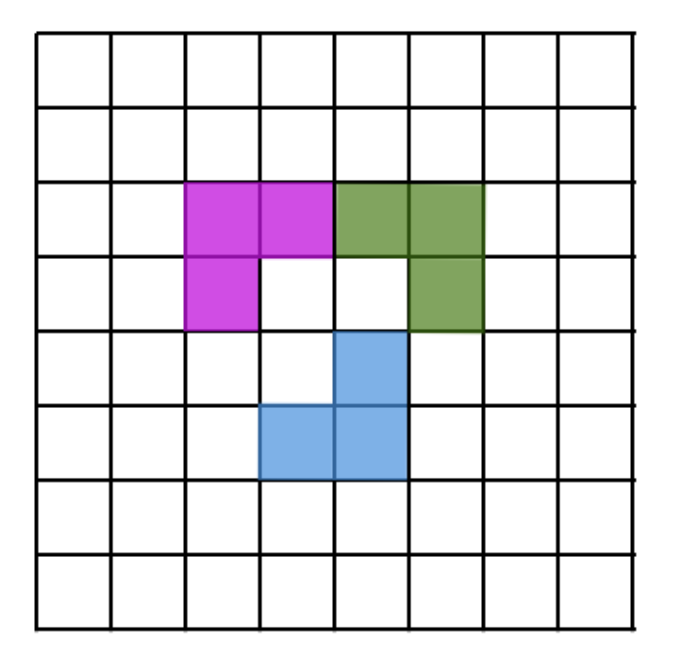Problems
With a red marker, Margaret marked three points with integer coordinates on a number line. With a blue marker, Angelina marked a midpoint for every pair of red points. Prove that at least 1 of the blue points has an integer coordinate.
Alice took a red marker and marked 5 points with integer coordinates on a coordinate plane. Miriam took a blue marker and marked a midpoint for each pair of red points. Prove that at least 1 of the blue points has integer coordinates.
The surface of a \(3\times 3\times 3\) Rubik’s Cube contains \(54\) squares. What is the maximum number of squares we can mark so that no marked squares share at least one vertex?
Make sure you show that both (a) you can achieve this maximum and (b) that you can’t do better than this maximum.
We are given a table of size \(n \times n\). \(n-1\) of the cells in the table contain the number \(1\). The remainder contain the number \(0\). We are allowed to carry out the following operation on the table:
1. Pick a cell.
2. Subtract 1 from the number in that cell.
3. Add 1 to every other cell in the same row or column as the chosen cell.
Is it possible, using only this operation, to create a table in which all the cells contain the same number?
On an 8×8 grid (like a chessboard), an L-corner is a shape made of 3 little squares of the board that touch to make an L. You can turn the L any way you like. We place the L-corners so that none overlap. What is the fewest L-corners you must place so that no more L-corners can be added anywhere? Here is an example of how three L-corners may look like:

What is the minimum number of \(1\times 1\) squares that need to be drawn in order to get an image of a \(25\times 25\) square divided into 625 smaller 1x1 squares?
In draughts, the king attacks by jumping over another draughts-piece. What is the maximum number of draughts kings we can place on the black squares of a standard \(8\times 8\) draughts board, so that each king is attacking at least one other?
Some points with integer co-ordinates are marked on a Cartesian plane. It is known that no four points lie on the same circle. Prove that there will be a circle of radius 1995 in the plane, which does not contain a single marked point.